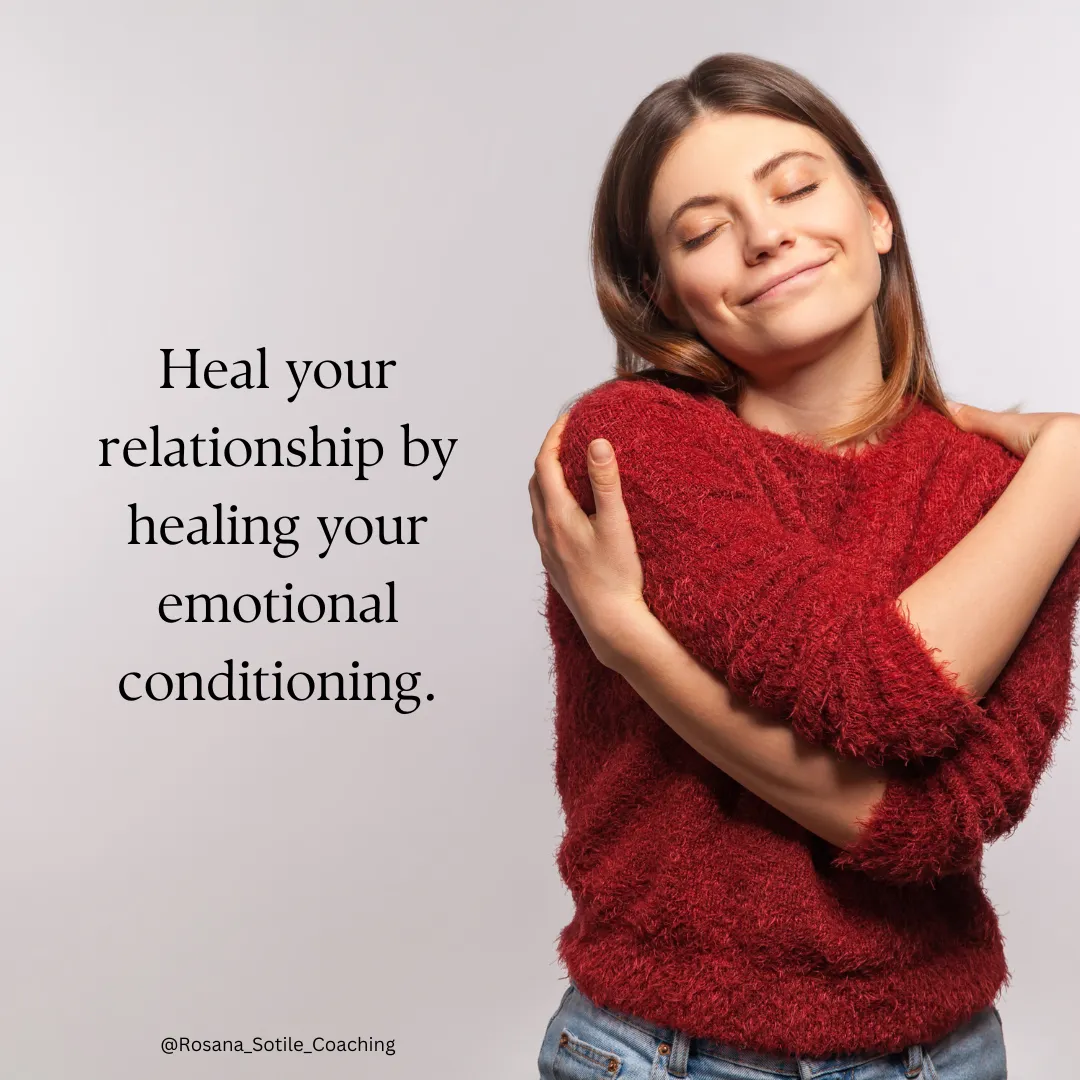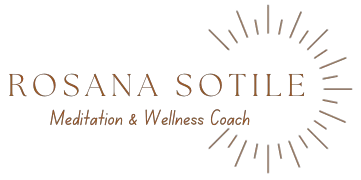Articles of Knowledge

How to Heal Your Emotional Conditioning
By: Rosana Sotile, Chopra Certified Well-Being Coach
"The wise use memories but do not allow memories to use them."
~ Ancient Vedic expression
What are emotional needs?
The great American psychologist Abraham Maslow is best known for his theory of the hierarchy of human needs. The first level of needs is for food, water, oxygen, shelter, and the protection we need to survive.
Beyond these essential needs, we have four fundamental emotional needs for:
1. Attention
2. Affection
3. Appreciation
4. Acceptance
All of our emotions derive from our fundamental human needs, including our need for attention (deep listening), affection (deep caring), appreciation (noticing a person's natural gifts), and acceptance (seeing and accepting someone exactly as they are.
At the most fundamental level, we have the capacity for only two basic emotional experiences: comfort and discomfort.
Comfort expresses the feelings of contentment, joy, peace, love, and gratitude. Discomfort includes feelings of frustration, distress, anger, fear, and sadness.
When we perceive that our physical and psychological needs are met, we feel comfort. When we perceive our needs are not met, we feel discomfort.
When we repress or ignore feelings of discomfort, we may eventually experience anxiety (anticipated pain), hostility (remembered pain), and/or guilt (redirected pain). This accumulated emotional pain can lead to depression and other illnesses.
There are two potential responses to unmet needs:
We can either react, which is an instinctual, conditioned, and learned behavior that is inherently limited.
Or we can respond, which implies being aware and having infinite, unlimited choices.
The more skilled we become at meeting our needs, the more likely we are to feel comfortable, happy, and at peace. The practice of conscious communication and the other tools we will explore in this article will help you become skilled at identifying and meeting your needs.
Keep in mind that, as social beings, we do desire to have our emotional needs met within our relationships (object-referral), and we can also evolve to have our emotional needs met from within our true self (self-referral). As our identity becomes more aligned with pure consciousness, as opposed to our ego selves, our perception of our needs being met begins to shift.
Your relationship with your needs
Most of us did not receive "instructions" for our emotional lives. We learned by observing our parents, teachers, and other caregivers who may have had a turbulent emotional skill set.
Depending on our family and culture, we might have learned that it was bad to feel and express some emotions, such as anger, fear, or even joy. On the other hand, our parents may have been wonderful teachers who encouraged us to express and communicate our feelings.
Whether our emotional upbringing was dysfunctional or nurturing, we can develop a healthy relationship with our own emotions and become skilled at expressing our needs and desires. To do this, we need to practice.
Take a few moments to try this mindful awareness exercise:
Sit comfortably and begin to relax your mind. Become aware of your physical body.
Take a moment to tune into your body. What are you feeling right now?
Give it a one-word label. Is it joy, sadness, anxiety, gratitude, or exhaustion?
They’re called feelings because we feel them in our body.
The next step is to realize that all emotions derive from needs. We feel comfort, happiness, and pleasure when we are getting our needs met. We feel discomfort, distress, and pain when we are not.
If you are feeling a sensation of discomfort right now, ask yourself, “What need do I have right now that is not being met?”
Be patient with yourself and let the answer come to you.
Again, try to describe your unmet need in one or two words. Some of our common human needs include safety, belonging, trust, acceptance, appreciation, attention, affection, creative expression, and a sense of purpose.
When you get clear on what you are feeling and what you need, if anything, you can then take action to get that need met, including asking for help.
This is a powerful step—and much more effective than the common strategy of expecting other people to figure out what we need without our having to ask for it.
You may also discover that what you need isn’t something from someone else, but something you need to give yourself, such as more sleep, better self-care, an outlet for creative expression, or self-acceptance and self- compassion.
The Pleasure/Pain Principle
Although every one of us is driven by the pleasure/pain principle, that which generates comfort or discomfort is different for each person. If you enjoy eating ice cream, eating it for dessert will bring you pleasure. On the other hand, if you are lactose intolerant, the same experience will generate feelings of pain or distress. Some people thrive on the exhilaration of a roller coaster while others wouldn’t take a ride even if they were paid.
In order to bring our unconscious emotional patterns into our conscious awareness, we need to ask ourselves a critical question:
What determines whether I interpret an experience as comfortable or uncomfortable?
Most likely, the answer will be “prior experiences.” It is, of course, true that past experiences influence our responses. For example, imagine you once ate at a fine dining restaurant but had a terrible experience. The food was cold, the service was slow, and a number of other mishaps occurred. Now, every time you see the restaurant, or hear someone mention its name, you experience feelings of frustration, disgust and anger. You have no kind words to say about that restaurant.
On the other hand, suppose you had gone to the same restaurant, but on a different day, and had a completely different experience. The food was the best you ever had, and the service was above standard. Your conditioned perception would be completely different than the previous one.
Even though past experiences can influence our present perceptions, we do not have to succumb to our past emotional conditioning. We can go beyond our habitual thought patterns and make new life-supporting choices.
If past experience is not the whole story, we have to look to the present, which means that we have to listen to our body. Remember, emotions are sensations in the body associated with thoughts in the mind. From the perspective of our body, our feelings of comfort or discomfort are primitive.
When our needs are getting met, we feel comfort, happiness, and pleasure.
When our needs are not getting met, we feel distress, sadness, and pain.
All emotions derive from needs. All emotions derive from needs. All emotions derive from needs.
Repeat this sentence to yourself like a mantra until you grasp the profound simplicity of this insight. When you do, you will possess a vital healing tool: the ability to nurture your emotional well-being.

What Else Can I Do?
1. Shift your perspective.
Consider how two people can perceive the same event, such as riding a roller coaster, in two very different ways.
One person may perceive roller coasters as an exciting adventure, plunging down the tracks in a tiny car suspended hundreds of feet in the air. It’s an exhilarating, euphoric experience.
Another person may dislike heights or the feeling of being out of control, and riding a roller coaster can be a terrifying event to be avoided at all costs.
The human mind is infinitely creative, and it has the power to shift its interpretation of any situation. You have the power within you to find new value and enjoyment in something that previously frightened you or caused you stress. You also have the choice to let go of situations, habits, and relationships, and anything else that is draining you and preventing you from enjoying your natural state of happiness and well-being.
2. Practice meditation
A daily practice of meditation is one of the best ways to release accumulated stress and shift our perceptions of our experiences.
In meditation, we experience a state of restful alertness that expands our creativity, intuition, and joy. We cultivate a witnessing awareness that allows us to stand back from a potentially stressful situation and respond with awareness rather than reacting with stress and anxiety.
Overtime, and with a consistent practice, we expand our awareness of our true self, the one that is free from conditioned responses and diluted perceptions. Meditation allows us to tap into the field of infinite possibilities, where we explore self-compassion and emotional healing. The self-healing benefits from meditation give us the inner tools needed to heal our external world.
3. Keep a journal
Studies have found that writing about stressful events improves both physical and psychological health. According to some researchers, when we have an experience we perceive as stressful, and we then ignore it or “stuff it”—or we obsess and ruminate about it—we activate the stress response in our body and mind. If we write about our experiences instead, we can process what happened, keeping only what serves us and letting go of the rest.
A regular journaling practice doesn’t need to take a lot of time. By spending only a few minutes of releasing our emotions and experiences onto paper, we can reduce the energy of stress in our body and improve our sleep, which is vital to our health.
4. Daily habits of self care
Eating healthy and moving your body are two other simple ways to nurture our needs and release stress. Nutritious food not only supports our physical health, but our mental health as well. It also clears our mind-body energy channels for balance.
Daily exercise, or any form of active movement, also releases stress and improves emotional well-being. Studies have shown the benefits of exercise for combating depression, anxiety and other mental health issues, as well as supporting improved sleep habits.
The small amount of time invested in these easy practices, some of which take almost no time at all, will begin to transform your mind-body from a state of stress to a state of relaxation.
Ultimately, when the mind and body are calm and we can detach from identifying with our ego-based stories, we are able to experience our underlying spiritual nature of happiness, wholeness, and bliss—and open to our full human potential.
If you’d like to learn more, or need assistance on your journey, please explore my services and classes at www.rosanasotile.com
CLICK HERE to be notified of new blog posts!

Rosana Sotile is the founder of Sacred Space Health, LLC and holds certifications as a Well-Being Coach, Primordial Sound Meditation Teacher and Ayurveda Health Instructor from the Institute for Integrative Nutrition and Chopra Education. She has a passion for helping people discover their inner sacred space and embrace the power of manifesting new realities. She also enjoys spending her free time in nature, especially at home in South Louisiana with her four children and one cat.
Rosana can be reached at info@rosanasotile.com, or direct message on LinkedIn

